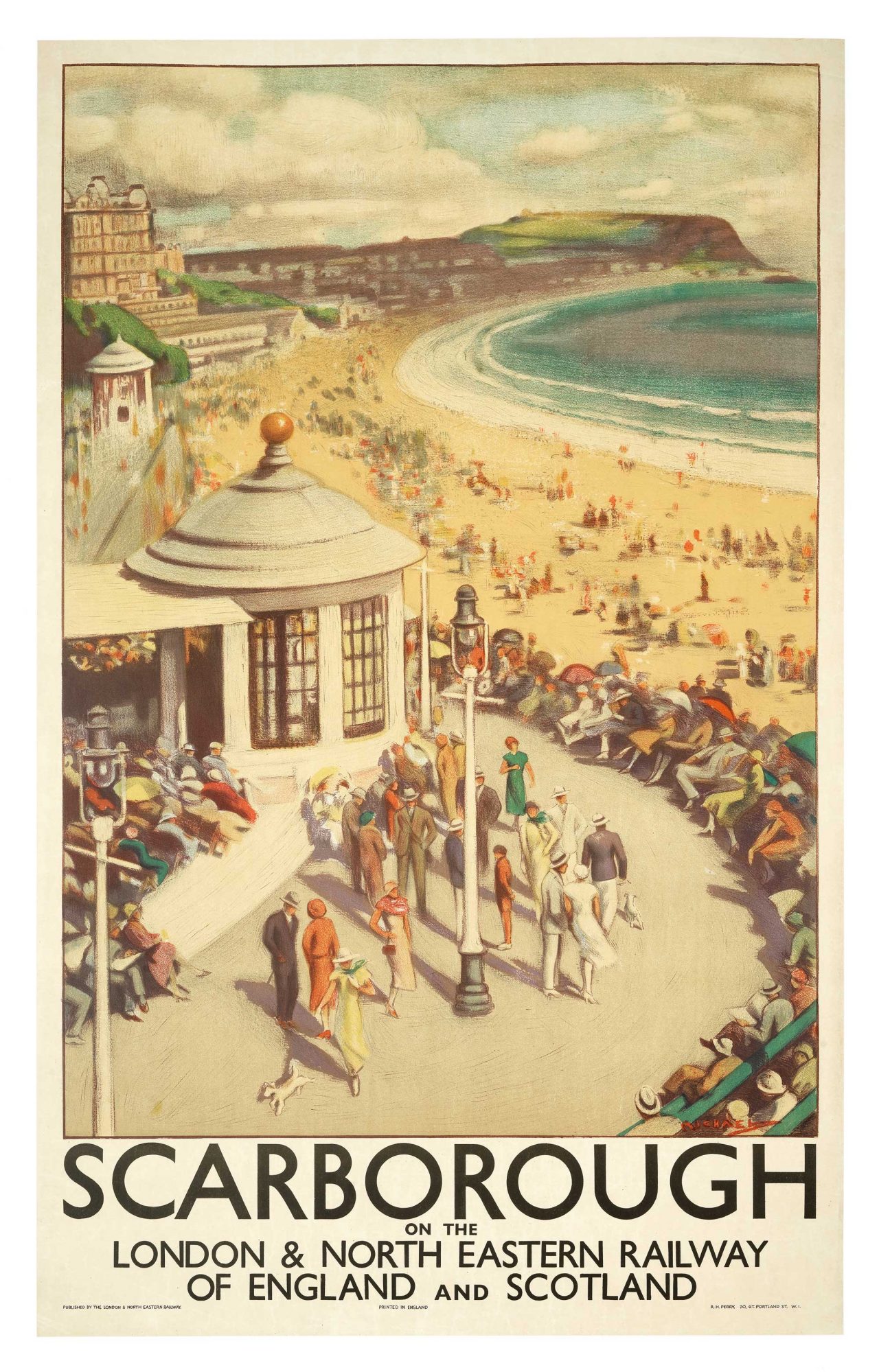In this article, Bonhams’ vintage poster expert Richard Barclay explains the value behind ‘once here today, gone tomorrow’ travel posters.
Richard Barclay is just about to travel from his home in Brittany to London on Eurostar to set up the latest Bonhams’ vintage posters auction.
He is understanding, but frustrated, over recent travel restrictions and has witnessed lockdowns creating ‘a renewed nostalgia’ for holidays and travel – and, in turn, many more people are looking for uplifting posters to adorn their homes to celebrate the golden age of travel.
Evocative
Sourcing posters to meet demand has been testing for Richard, who usually has an ‘army of finders’ who visit flea markets and build a network. “If you get known, the market stall holders keep things for you, but if you don’t turn up again, they forget about you!” he explains. “Professional finders bring posters back to me; France was a big centre for posters but now it is global because the images are so evocative.”
See also: Museum Frieder Burda Presents Solo Exhibitions by Katharina Sieverding

Richard says vintage posters have been his lifelong passion, and he started the poster department at Christie’s in 1982. He quickly realised he was handling iconic artists like Toulouse Lautrec, Norman Wilkinson CBE and Dame Laura Knight. He said: “To buy famous artists’ paintings would otherwise have been well beyond my means – nowadays a Lautrec poster can achieve £200,000 to £300,000 at auction.”
Richard, who moved to Bonhams in 2018, said: “Colour posters came about in the 19th century when Alois Senefelder developed lithography. This unknown Bavarian playwright accidentally found he could duplicate his scripts by writing them in crayon on limestone slabs and then printing them with rolled-on ink.
Inspiring
“French printer Jules Chéret went one further with his high-speed colour lithography in the 1850s to make mass production possible and keep prices down. His use of large paper meant companies could use posters to advertise their wares – and that included travel. Although travel is my speciality, movies, soap, alcohol and bicycles are all great subjects for colourful and inspiring art.
“Travel posters, attracting passers-by to visit glamorous destinations, tempting them to fly across the Atlantic or sail on opulent cruise ships were often printed on poor quality paper so acquiring an antique poster in excellent condition can be a rare find.
“Often collectors like to focus on one destination where they have a connection such as prestigious ski resorts in France and Switzerland, like Chamonix or St Moritz. If a glitzy resort and a top artist combine, then prices can be particularly strong.

“Someone might own a lovely chalet and enjoy buying the best posters either of the region or country. It’s the same with shipping – one client only buys Transatlantic posters including SS Normandie, probably the most wonderful art deco ship ever built. A.M. Cassandre created legendary art deco shipping posters which celebrated new modes of luxury transport such as SS Normandie. After World War Two he went on to design Yves Saint Laurent’s elegant logo – three simple intertwined initials YSL.
“Other collectors include railway enthusiasts who look out for specific lines such as Great Western Railway destinations, as well as British seaside resort posters, such as Bridlington, Whitby and Scarborough which are also being snapped up by buyers who collect memorabilia linked to a particular town.
“Posters revolve around the graphics. Like any advertisement they have got to get the viewer ‘to do’ or ‘to go’ in 30 seconds, catch the eye and deliver the message.
“They were printed on cheap paper because an advertising campaign could change within a week or month and then be ripped down – they were here today, gone tomorrow, so it is not unusual for posters to have quality problems.

Categories
“Category A+ means good as mint and A will be very good. Category B means problems are visible – a fold or a big tear, and C is not so good. D will be poor.
“Buy the best condition you can afford. Posters were printed in multiples so perhaps wait and get a better one – although in the case of extremely rare subjects, such as the Titanic, whatever the condition buy it. Here the rarity value kicks in.

“Similarly, during the First World War fewer posters were produced so they generally demand a higher premium and collectible series such as Michelin tyres with incredibly vibrant and rare graphics achieve a great deal of interest and high prices.”
Richard Barclay’s top tips
• Buy through a recognised dealer.
• If a poster needs restoration and backing, give it to a reputable vintage poster restorer who will wash the poster to remove dirt and acidity before attending to any tears or folds and put the poster onto a quality linen backing.
• When buying a frame, Plexiglass is better to use than glass. It weighs less and gives more protection against fading. Remember that moonlight bleaches colour as much as sunlight.
• A good quality poster that achieved £1,000 at auction five years ago can now reach £3,000, so posters can be an appreciating asset.
• Buy something that you love and can enjoy.
For more information contact Richard at Richard.Barclay@bonhams.com
Protecting your poster collection
With poster prices rising, Aston Lark Private Clients Director Julie Webb suggests poster collections should be valued on a regular basis to ensure their values are up to date.
“Aston Lark are specialists in finding the right insurance solution for art and antique collections. We understand the value of a good policy and will help you protect your investment.”
To speak to Aston Lark about your artwork insurance please call 020 8256 4901, or email privateclients@astonlark.com.














